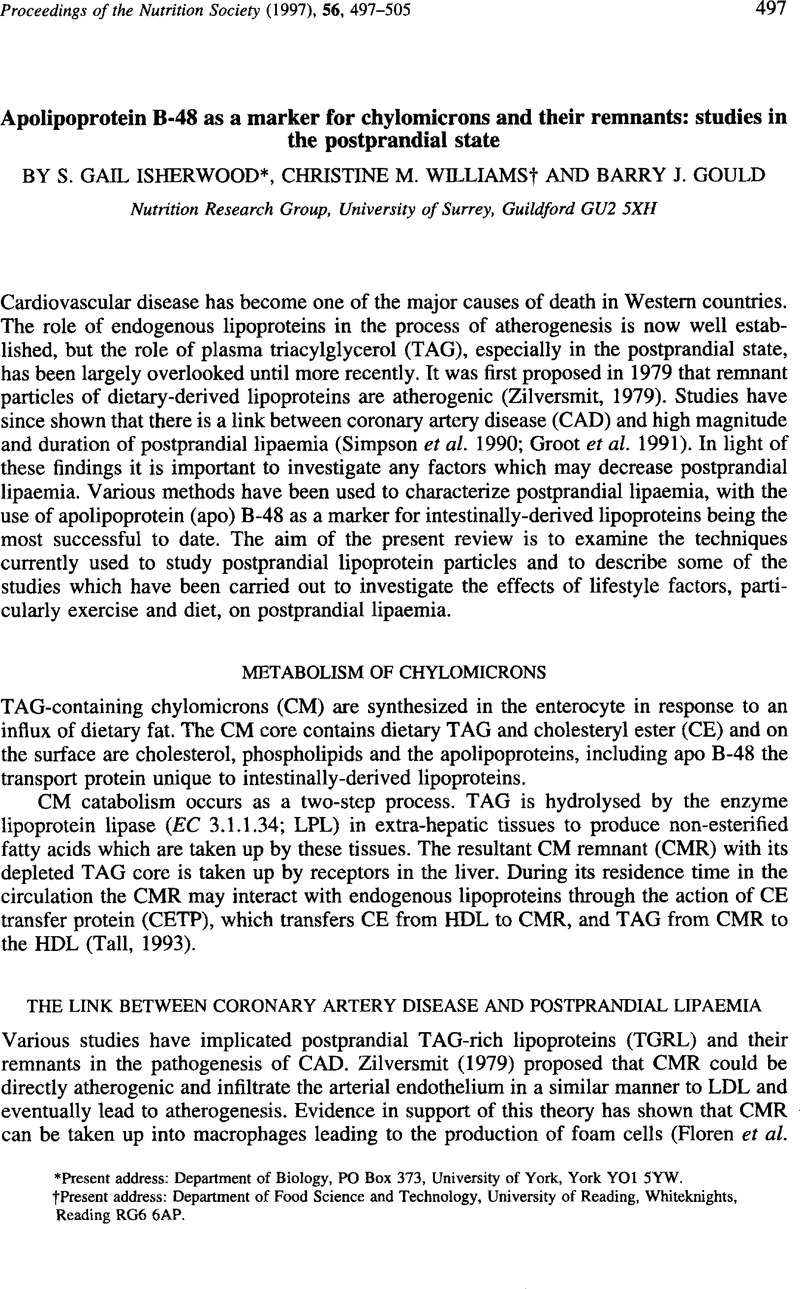Crossref Citations
This article has been cited by the following publications. This list is generated based on data provided by Crossref.
Cartwright, Ian J.
and
Higgins, Joan A.
1999.
Isolated rabbit enterocytes as a model cell system for investigations of chylomicron assembly and secretion.
Journal of Lipid Research,
Vol. 40,
Issue. 7,
p.
1357.
Jackson, Kim G.
and
Williams, Christine M.
2004.
Apolipoprotein B-48: comparison of fasting concentrations measured in normolipidaemic individuals using SDS–PAGE, immunoblotting and ELISA.
Atherosclerosis,
Vol. 176,
Issue. 2,
p.
207.
Nakano, Takanari
Shimanuki, Tomoko
Matsushita, Makoto
Koyama, Iwao
Inoue, Ikuo
Katayama, Shigehiro
Alpers, David H.
and
Komoda, Tsugikazu
2006.
Involvement of intestinal alkaline phosphatase in serum apolipoprotein B-48 level and its association with ABO and secretor blood group types.
Biochemical and Biophysical Research Communications,
Vol. 341,
Issue. 1,
p.
33.
Takechi, R.
Galloway, S.
Pallebage-Gamarallage, M.M.S.
Lam, V.
and
Mamo, J.C.L.
2010.
Dietary fats, cerebrovasculature integrity and Alzheimer’s disease risk.
Progress in Lipid Research,
Vol. 49,
Issue. 2,
p.
159.
Benayas, Beatriz
Morales, Joaquín
Egea, Carolina
Armisén, Pilar
and
Yáñez‐Mó, María
2023.
Optimization of extracellular vesicle isolation and their separation from lipoproteins by size exclusion chromatography.
Journal of Extracellular Biology,
Vol. 2,
Issue. 7,





